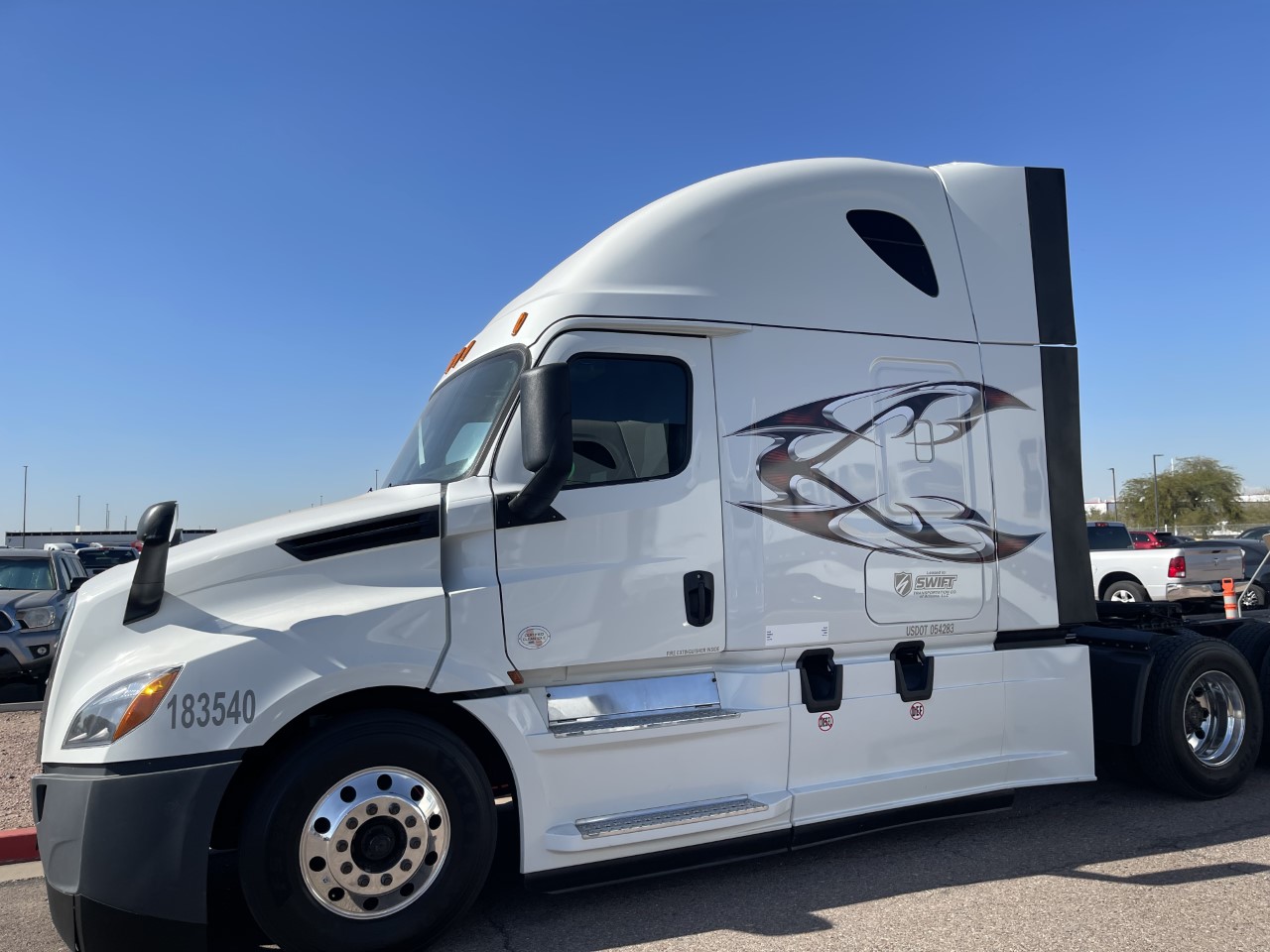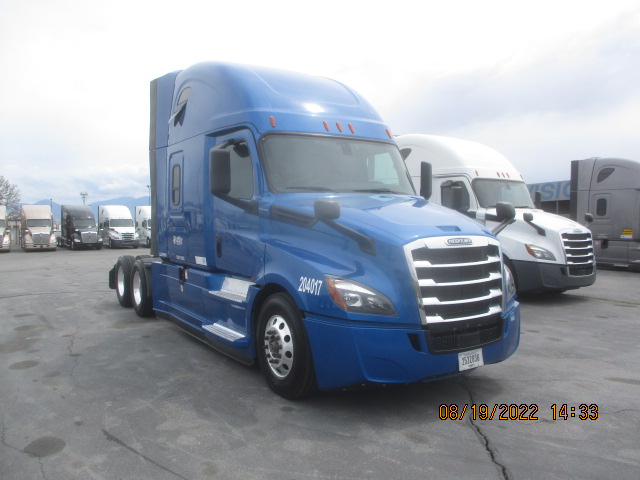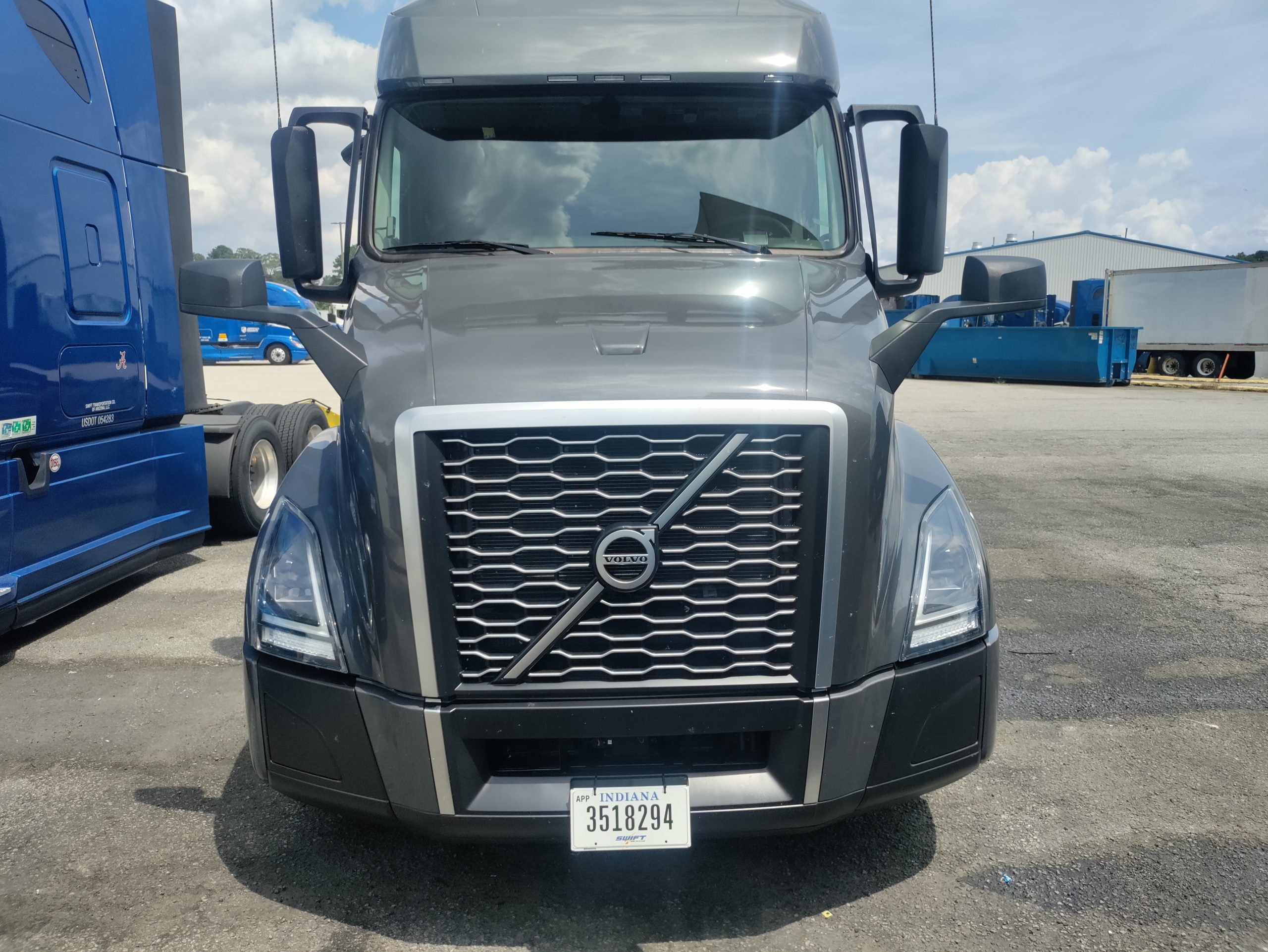How Much Line Haul Does A Swift Owner Operator Get?
How Much Line Haul Does A Swift Owner Operator Get? cars.truckstrend.com
For many aspiring and current truck drivers, the dream of becoming an owner-operator represents the pinnacle of independence and earning potential in the trucking industry. Swift Transportation, one of North America’s largest trucking companies, offers various opportunities for owner-operators, often through lease-purchase programs or direct independent contractor agreements. A fundamental question for anyone considering this path is: "How much line haul does a Swift owner-operator get?"
Understanding line haul is paramount, as it forms the bedrock of an owner-operator’s income. Line haul refers to the revenue generated from the actual transportation of freight from its origin to its destination, excluding any additional fees or accessorial charges. It is the core per-mile or per-load rate that directly reflects the value of moving goods. For a Swift owner-operator, the line haul rate they "get" is not a fixed, universal number but rather a dynamic figure influenced by numerous factors and the specific compensation structure offered by Swift. This comprehensive guide will delve into these complexities, providing a clear picture of earning potential and how to maximize it.
How Much Line Haul Does A Swift Owner Operator Get?
Understanding Swift’s Owner-Operator Compensation Model
Swift Transportation primarily compensates its owner-operators through a percentage-based model for line haul. This means that instead of a flat per-mile rate, the owner-operator receives a negotiated percentage of the gross revenue generated by the load. This structure aligns the owner-operator’s earnings directly with the profitability of the freight being moved.
Typically, Swift owner-operators receive:
- A percentage of the gross line haul revenue: This is often in the range of 70% to 75% of what Swift charges the customer for the line haul portion of the freight.
- 100% of the Fuel Surcharge (FSC): The FSC is a separate charge passed on to the customer to help offset fluctuating fuel costs. Owner-operators usually receive the full amount of this surcharge.
- 100% of approved accessorials: These are additional charges for services beyond basic transportation, such as detention time, extra stops, layovers, tarping fees, or hazardous materials handling.

It’s crucial to distinguish between the gross revenue a load generates for Swift and the portion the owner-operator "gets." If a load pays Swift $2.50 per mile for line haul, and the owner-operator receives 75%, they would get $1.875 per mile in line haul revenue, plus the FSC and any accessorials. This percentage-based model means that when freight rates are high, the owner-operator’s earnings increase proportionally. Conversely, during periods of lower rates, their income will also reflect that downturn.
Factors Influencing Swift Owner-Operator Line Haul Rates
The amount of line haul a Swift owner-operator gets is not static. It’s a variable figure influenced by a multitude of market and operational factors:

Freight Market Conditions: This is perhaps the most significant determinant.
- Supply and Demand: When freight demand is high and truck availability is low, rates tend to increase. During economic slowdowns or periods of excess capacity, rates can drop significantly.
- Seasonality: Certain times of the year (e.g., peak retail seasons, harvest seasons) see higher freight volumes and thus better rates.
- Spot Market vs. Contract Rates: Swift operates heavily on contract freight, but rates are still influenced by the broader market.

-
Type of Freight and Equipment:
- Dry Van: General freight, often the most common and typically has average rates.
- Reefer (Refrigerated): Requires specialized equipment and often commands higher rates due to the perishable nature of the goods and the added responsibility.
- Flatbed: Hauling oversized or uniquely shaped loads, also often commands higher rates due to specialized handling and securement.
- Intermodal: Hauling containers to and from rail yards, which can have different rate structures.
-
Lane and Route Specifics:
- High-Demand Lanes: Routes connecting major economic hubs or areas with imbalanced freight flows (e.g., more outbound than inbound freight) tend to pay better.
- Backhauls: Securing a paying load for the return trip is critical. Lanes with balanced freight flows minimize unpaid "deadhead" miles.
- Geographic Region: Rates vary by region, influenced by local economic activity, population density, and industry presence.
-
Deadhead Miles: These are the miles driven without a load. While not directly part of "line haul," they drastically impact the effective line haul rate per total mile driven. A high percentage of deadhead miles means the owner-operator’s earnings from paying miles must cover the costs of the unpaid miles, effectively reducing their per-mile profitability.
-
Fuel Surcharge (FSC): While typically passed through 100% to the owner-operator, the FSC fluctuates with fuel prices. A higher FSC boosts overall revenue, though it’s designed to offset the higher cost of fuel, not necessarily increase net profit beyond that.
-
Accessorial Charges: As mentioned, these are additional revenue streams. While separate from the base line haul, they are crucial for boosting overall weekly gross income. Effectively logging and getting paid for detention, layovers, and extra stops can significantly impact profitability.
Typical Line Haul Rates for Swift Owner Operators
Given the variables, it’s challenging to provide a precise dollar figure. However, we can discuss ranges and averages for the owner-operator’s share.
A Swift owner-operator receiving 70-75% of the gross line haul can expect their portion to range from $1.20 to $1.80+ per mile for the loaded miles, before accounting for deadhead, FSC, and accessorials.
- Low End ($1.20 – $1.40/mile): Might occur during periods of low freight demand, less desirable lanes, or with standard dry van freight.
- Average ($1.40 – $1.60/mile): A more common range for consistent operations.
- High End ($1.60 – $1.80+/mile): Achievable on premium lanes, specialized freight (reefer, flatbed), or during strong market conditions.
It’s critical to remember: These are the gross per-mile earnings from the load’s line haul portion. From this, the owner-operator must cover all their operating expenses: fuel, maintenance, tires, insurance, truck payments, permits, tolls, etc. The true "take-home" profit is what remains after these substantial costs.
Maximizing Your Line Haul as a Swift Owner Operator
While Swift’s dispatch largely manages load assignments, owner-operators can still employ strategies to optimize their earnings:
- Understand Your Operating Costs: Before you can maximize line haul, you must know your "cost per mile." This includes fixed costs (truck payment, insurance) and variable costs (fuel, maintenance). Knowing this allows you to identify which loads are truly profitable.
- Communicate Effectively with Dispatch: Build a strong working relationship with your dispatcher. Clearly communicate your preferences for lanes, home time, and desired load types. A good relationship can sometimes lead to better load assignments.
- Minimize Deadhead Miles: This is paramount. Always aim to secure a paying load for your return trip. Discuss backhaul options with dispatch. Every mile driven without revenue eats into your effective rate per mile.
- Prioritize High-Paying Lanes and Freight: If given options, always opt for the higher-paying loads or lanes, even if it means a slightly longer route.
- Accurately Log and Bill for Accessorials: Do not leave money on the table. If you are detained, make sure it’s properly documented and billed according to Swift’s policy. Every dollar from accessorials adds directly to your bottom line.
- Maintain Your Equipment: Downtime due to breakdowns means zero income. Regular preventative maintenance, timely repairs, and pre-trip inspections are vital for keeping your truck on the road and earning.
- Optimize Fuel Purchases: Utilize fuel discount programs (often provided by Swift), plan fuel stops strategically, and avoid impulsive fueling at expensive locations. Fuel is typically the largest variable expense.
- Efficient Route Planning: Use navigation tools to find the most efficient routes, avoid unnecessary tolls (if not reimbursed), and plan breaks to maximize drive time within HOS limits.
Challenges and Considerations
Despite the potential for high gross earnings, Swift owner-operators face several challenges:
- High Operating Costs: The sheer volume of expenses (fuel, tires, maintenance, insurance, truck payments) can quickly erode gross revenue.
- Market Volatility: Freight rates can swing wildly, making income unpredictable.
- Reliance on Dispatch: While you’re an independent contractor, you are largely reliant on Swift’s dispatch system for loads, which can limit your flexibility compared to truly independent owner-operators working with multiple brokers.
- Managing Your Business: Beyond driving, an owner-operator must be a skilled business manager, handling finances, taxes, and compliance.
- Lease-Purchase Program Specifics: If on a lease-purchase, the terms of the lease (interest rates, balloon payments) significantly impact profitability.
Illustrative Swift Owner-Operator Line Haul Earning Potential & Influencing Factors
This table illustrates how different factors contribute to or detract from a Swift owner-operator’s line haul earnings.
| Factor | Description | Impact on Net Earnings | Typical Range/Notes for O/O Share |
|---|---|---|---|
| Swift Payment Model | Percentage of the gross line haul charged to the customer. | High | 70% – 75% of Gross Line Haul Revenue (O/O’s share). |
| Base Line Haul Rate | The per-mile rate for moving freight, before deductions or additions. | High | Varies from $1.60 – $2.50+ per mile (what Swift charges customer). O/O gets percentage of this. |
| Fuel Surcharge (FSC) | Additional charge to offset fuel costs, passed through to the O/O. | Medium | 100% of the FSC (e.g., $0.30 – $0.60+ per mile, varies with fuel prices). |
| Accessorials | Fees for services like detention, extra stops, layovers, tarping, hazmat. | Medium | 100% of approved accessorials (e.g., $50-$150 for detention, $75+ per extra stop). |
| Freight Type/Lane | Dry van, reefer, flatbed; high-demand vs. low-demand routes. | High | Reefer/Flatbed often pay higher than dry van; specific lanes can command premiums. |
| Market Conditions | Supply and demand for freight; seasonality. | High | Rates fluctuate significantly with economic cycles and seasonal peaks. |
| Deadhead Percentage | Miles driven without a load (unpaid). | High (Negative) | 0% – 20%+ of total miles. High deadhead drastically reduces effective rate per loaded mile. |
| Weekly Miles Driven | Total miles covered in a week. More loaded miles = more line haul. | High | 2,500 – 3,000+ loaded miles per week often targeted for profitability. |
| Estimated Gross Revenue Per Mile (O/O Share) | The total money an O/O receives per loaded mile, combining line haul percentage + FSC + average accessorials. | Varies | Could range from $1.60 – $2.50+ per loaded mile (before O/O’s operating expenses). |
Note: The "Estimated Gross Revenue Per Mile (O/O Share)" is the total money received for each loaded mile driven. This is distinct from the net profit after all expenses.
Conclusion
The question of "how much line haul does a Swift owner-operator get" doesn’t have a single, simple answer. It’s a complex equation where the owner-operator typically receives a significant percentage (70-75%) of the gross line haul Swift charges, plus 100% of fuel surcharges and accessorials. This structure means earnings are directly tied to market rates and the efficiency of operations.
Successful Swift owner-operators are not just skilled drivers; they are astute business managers. They understand their operating costs, meticulously track every expense, and proactively work to maximize their loaded miles while minimizing deadhead. While the gross line haul can be substantial, true profitability hinges on diligent financial management and strategic decision-making in a dynamic and competitive industry. For those willing to embrace the challenges and responsibilities, being a Swift owner-operator can offer a path to significant earnings and the freedom of being your own boss.
Frequently Asked Questions (FAQ)
Q1: What percentage of the load does a Swift owner-operator typically get?
A1: Swift owner-operators commonly receive between 70% to 75% of the gross line haul revenue that Swift charges the customer for the load.
Q2: Do Swift owner-operators get paid for deadhead miles?
A2: Generally, no. Swift owner-operators are not typically paid for deadhead (empty) miles. This is why minimizing deadhead is crucial for maximizing the effective per-mile rate and overall profitability.
Q3: How are fuel surcharges (FSC) handled for Swift owner-operators?
A3: Swift owner-operators usually receive 100% of the fuel surcharge that Swift collects from the customer. This helps offset the fluctuating cost of fuel.
Q4: What are typical weekly gross earnings for a Swift owner-operator?
A4: Weekly gross earnings can vary significantly based on miles driven, freight rates, and accessorials, but can range from $3,000 to $6,000+ per week. This is before deducting the owner-operator’s substantial operating expenses (fuel, maintenance, truck payments, etc.).
Q5: Does Swift offer lease-purchase programs for aspiring owner-operators?
A5: Yes, Swift is well-known for offering lease-purchase programs, which provide a pathway for company drivers to transition into owner-operator roles by leasing a truck with the option to purchase it.
Q6: Are accessorial charges important for a Swift owner-operator’s income?
A6: Absolutely. Accessorial charges (like detention pay, extra stops, layovers) are paid 100% to the owner-operator and can significantly boost overall weekly revenue, making them a crucial component of total earnings.






